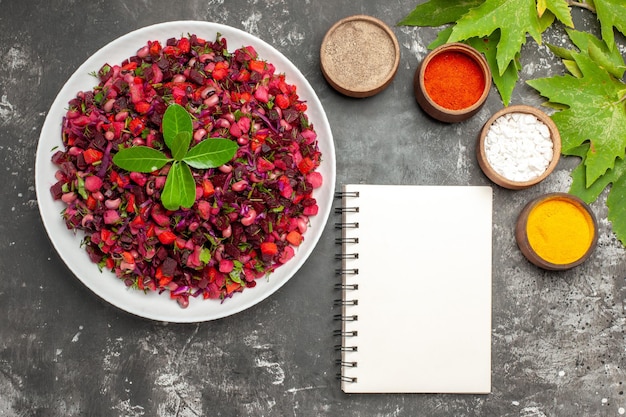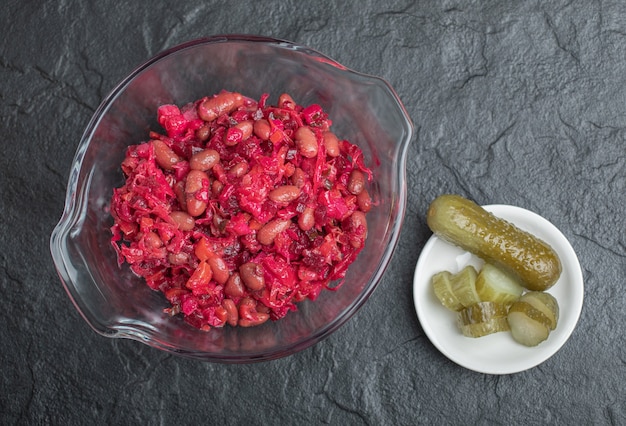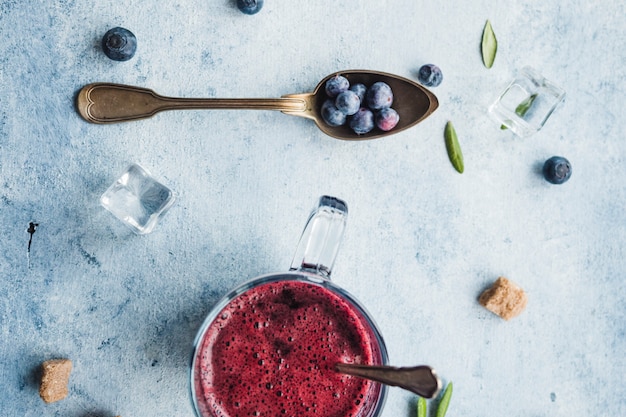Let's talk about amaranth! You might be thinking, "Amaranth? What on earth is that?" Well, this ancient grain is about to become your new kitchen hero. It's bursting with protein, fibre, and loads of essential vitamins and minerals. And the best part? It's super versatile and delicious! From fluffy porridge to hearty salads, there's an amaranth dish for every occasion. So, grab your apron, gather your ingredients, and get ready to embark on a culinary adventure with me, as we dive into the world of amaranth.
(Part 1) Getting to Know Amaranth: A Grain with a Rich History

First things first, let's get acquainted with this incredible grain. Amaranth is a pseudo-cereal, meaning it's a seed that's cooked and eaten like a grain. It's been around for thousands of years, cultivated by ancient civilizations like the Aztecs and Incas. It's experiencing a well-deserved comeback in modern kitchens, and for good reason!
A Blast From the Past: A Grain with Ancient Roots
I remember the first time I saw amaranth in the supermarket. I was intrigued! Who wouldn't be by a grain with a name like that? I picked up a bag, curious to see what it was all about. And let me tell you, I wasn't disappointed! Its earthy flavour and fluffy texture reminded me of quinoa, but with a slightly more nutty and subtle taste. It's become a staple in my pantry ever since.
Amaranth has a fascinating history. It was a staple food for the Aztecs and Incas, and it played a significant role in their religious ceremonies. They even used it to make amaranth cakes for offerings to their gods. The name "amaranth" itself comes from the Greek word "amarantos," which means "unfading" or "immortal." It's no wonder they held it in such high regard!
The nutritional powerhouse: A Grain Packed with Goodness
Amaranth isn't just a tasty grain; it's a nutritional powerhouse. It's an excellent source of protein, especially for plant-based diets. You know, when you're trying to eat more vegetarian meals, it's crucial to get enough protein, and amaranth really delivers. It's also loaded with fibre, which keeps you feeling full and satisfied, and it's a good source of iron, magnesium, and vitamins B and E. Plus, it's naturally gluten-free, making it perfect for those with gluten sensitivities.
Let's look at some of the key nutritional benefits of amaranth:
- High in Protein: Amaranth provides a significant amount of protein, making it an excellent choice for those following a vegetarian or vegan diet. It's a complete protein, meaning it contains all nine essential amino acids.
- Rich in Fibre: Amaranth is a great source of dietary fibre, which helps regulate digestion, promotes satiety, and can help lower cholesterol levels.
- Packed with Vitamins and Minerals: Amaranth is a good source of iron, magnesium, and vitamins B and E. These nutrients play important roles in energy production, immune function, and overall health.
- Naturally Gluten-Free: Amaranth is naturally gluten-free, making it a safe and delicious option for people with gluten sensitivities or celiac disease.
(Part 2) Cooking Amaranth: A Step-by-Step Guide to Mastering This Ancient Grain

Now, let's get down to the nitty-gritty. Cooking amaranth is a breeze, even for a cooking novice. It's a bit like cooking rice or quinoa, but with a few subtle differences.
The Essential Ratio: Finding the Perfect Balance
The general rule of thumb is to use a 1:2 ratio of amaranth to liquid. That means for every 1 cup of amaranth, you'll use 2 cups of liquid. But feel free to experiment with the ratio, depending on the texture you prefer. For a fluffier grain, use a higher liquid ratio. And if you like a more hearty texture, use a bit less liquid. It's all about finding your perfect balance!
The Boiling Point: Starting the Cooking Process
Now, in a saucepan, bring the liquid to a boil. Then, add the amaranth, stirring to ensure it's fully submerged. After that, reduce the heat to a simmer, cover the pan, and cook for about 15-20 minutes. You'll know it's ready when the amaranth is tender and the liquid has been absorbed. Simple as that!
The Fluff Factor: Achieving That Perfect Texture
To prevent the amaranth from sticking, give it a gentle stir every few minutes. And once it's cooked, let it stand for 5-10 minutes with the lid on. This will allow the amaranth to absorb any remaining liquid and become delightfully fluffy.
Beyond the Basics: Tips for Cooking Amaranth
Here are some additional tips for cooking amaranth like a pro:
- Use any liquid: You can use water, vegetable broth, or even milk to cook amaranth. Experiment with different liquids to add flavour to your dishes.
- Add spices: For extra flavour, add spices like cinnamon, nutmeg, or cardamom while the amaranth is cooking.
- Don't overcook: Overcooked amaranth can become mushy. Cook it until it's tender but still slightly firm.
(Part 3) Delicious Ways to Enjoy Amaranth: From Breakfast to Dinner

Okay, so now that you're a master at cooking amaranth, let's talk about how to enjoy it. The possibilities are truly endless! Think of it as a blank canvas for your culinary creativity.
Breakfast Bliss: A Nourishing and Delicious Start to Your Day
Start your day with a nourishing and delicious amaranth porridge. Simply cook the amaranth according to the instructions, and then get creative with toppings. I love adding fresh fruit like berries and bananas, a drizzle of honey or maple syrup, a sprinkle of nuts, and a dollop of yoghurt. It's a delicious and satisfying way to start the day.
Lunchtime Delight: A quick and easy meal Solution
For a quick and easy lunch, try an amaranth salad. Cook the amaranth according to the instructions, let it cool, and then toss it with your favourite salad ingredients. I like to add chopped vegetables like bell peppers, cucumbers, and onions, along with some protein, like chickpeas or grilled chicken. A light vinaigrette dressing adds the perfect touch of flavour.
Dinnertime Decadence: Hearty and Satisfying Dishes
When you're craving something hearty and satisfying, consider an amaranth-based dinner. You can use cooked amaranth as a base for bowls, stir-fries, or even veggie burgers. Just get creative with the ingredients, and you'll have a delicious and nutritious meal in no time.
(Part 4) Amaranth in Action: Recipes for Inspiration
Alright, let's move on to some real-life inspiration. Here are a few of my favourite amaranth recipes that I've been enjoying lately. These are super simple to make and absolutely delicious.
Recipe 1: Amaranth Porridge with Berry Compote
This is a perfect breakfast or brunch option. You can find the recipe here: [Insert Link to Recipe]
Here's a sneak peek at the ingredients:
- 1 cup amaranth
- 2 cups water or milk
- 1/2 cup berries (fresh or frozen)
- 1 tablespoon honey or maple syrup (optional)
- 1/4 cup chopped nuts (optional)
- 1/4 cup yoghurt (optional)
Instructions:
- Cook the amaranth according to the instructions above.
- While the amaranth is cooking, make the berry compote by combining the berries and honey or maple syrup in a small saucepan. Cook over medium heat until the berries are softened and the mixture thickens slightly.
- Once the amaranth is cooked, top it with the berry compote, nuts, and yoghurt (if desired).
Recipe 2: Amaranth Salad with Roasted Vegetables
This is a healthy and vibrant salad that's perfect for lunch or a light dinner. You can find the recipe here: [Insert Link to Recipe]
Here's a sneak peek at the ingredients:
- 1 cup cooked amaranth
- 1 cup roasted vegetables (such as broccoli, carrots, bell peppers, zucchini)
- 1/2 cup chickpeas or lentils (cooked)
- 1/4 cup chopped fresh herbs (such as parsley, cilantro, mint)
- 1/4 cup vinaigrette dressing
Instructions:
- Roast the vegetables until tender and slightly caramelized.
- Combine the cooked amaranth, roasted vegetables, chickpeas or lentils, and herbs in a large bowl.
- Drizzle with the vinaigrette dressing and toss to combine.
Recipe 3: Amaranth Veggie Burgers
These veggie burgers are packed with flavour and nutrition. You can find the recipe here: [Insert Link to Recipe]
Here's a sneak peek at the ingredients:
- 1 cup cooked amaranth
- 1 cup chopped vegetables (such as carrots, zucchini, onions)
- 1/2 cup cooked lentils or beans
- 1/4 cup breadcrumbs or oats
- 1 egg (optional)
- 1 tablespoon chopped fresh herbs (such as parsley, cilantro, chives)
- 1 teaspoon spices (such as cumin, paprika, garlic powder)
Instructions:
- Combine all the ingredients in a large bowl and mix well.
- Form the mixture into patties and cook them in a skillet or on a grill until heated through and golden brown.
- Serve the veggie burgers on buns with your favourite toppings, such as lettuce, tomato, onion, and cheese.
(Part 5) Storage and Shelf Life: Keeping Your Amaranth Fresh
Okay, now that you've got a handle on cooking and enjoying amaranth, let's talk about how to store it. You want to make sure you get the most out of your purchase. It's like a little bit of planning goes a long way.
Storing Uncooked Amaranth: Maintaining Its Freshness
Uncooked amaranth can be stored in an airtight container in a cool, dry place for up to 6 months. I keep mine in the pantry, and it stays fresh for ages. Just make sure the container is airtight so that no pesky bugs or moisture can get in and spoil your grain. You can also store it in the freezer for up to a year, but you may need to thaw it before cooking. You know, sometimes you just need that extra bit of time.
Storing Cooked Amaranth: Making it Last Longer
Once you've cooked the amaranth, you can store it in an airtight container in the refrigerator for up to 3-4 days. I often make a big batch of cooked amaranth and use it throughout the week for various meals. It's super convenient, especially on busy days. You can also freeze cooked amaranth for up to 3 months. It's a lifesaver when you're in a pinch and need a quick and easy meal.
(Part 6) Exploring Amaranth Beyond the Kitchen: Its Versatility in Other Areas
Amaranth is not just a culinary gem; it's also a versatile ingredient in other areas of our lives.
Amaranth in Beauty: A Natural Ingredient for Skincare
Did you know that amaranth can also be used in beauty products? It's rich in antioxidants and can help soothe and nourish the skin. You'll find it in many face masks, creams, and even shampoos. I've used amaranth-based skincare products myself, and they've left my skin feeling soft and radiant.
Amaranth in Animal Feed: A Nutritious Option for Livestock
Amaranth is also used in animal feed. It's a high-protein and nutritious option for livestock, especially for chickens and pigs. And it's a good alternative to soy, which is often associated with environmental concerns.
(Part 7) Fun Facts About Amaranth: Unveiling the Secrets of This Ancient Grain
You know what they say, knowledge is power. And when it comes to amaranth, I've got some fun facts to share.
The Ancient Grain: A Historical Treasure
Amaranth is one of the oldest cultivated grains, with a history dating back thousands of years. The Aztecs and Incas used it in religious ceremonies and considered it a sacred food. And the name "amaranth" itself comes from the Greek word "amarantos," which means "unfading" or "immortal." How cool is that?
The Colourful Grain: A Rainbow of Flavours
Amaranth comes in a variety of colours, including white, red, gold, and black. I love the colourful variety; it adds a touch of vibrancy to any dish. It also has a different flavour profile depending on the colour. The red amaranth is slightly more earthy than the white, for example.
The Versatile Grain: A Culinary Chameleon
Amaranth is super versatile. You can use it in sweet and savoury dishes, and it's even used in baking. I've even seen amaranth used as a substitute for bread crumbs in a breading mixture. It's like the chameleon of the grain world!
(Part 8) FAQs about Amaranth: Clearing Up Common Questions
Now, let's address some common questions you might have about this amazing grain.
1. What does amaranth taste like?
Amaranth has a slightly nutty and earthy flavour. It's not as bland as rice, and it has a unique, slightly sweet note that makes it delicious in both sweet and savoury dishes.
2. Is amaranth gluten-free?
Yes! Amaranth is naturally gluten-free. It's a great alternative to wheat for people with gluten sensitivities or those following a gluten-free diet.
3. Where can I buy amaranth?
You can find amaranth in most health food stores, supermarkets, and online retailers. Look for it in the grain aisle or the gluten-free section. I've even seen it at some ethnic grocery stores.
4. How do I know if amaranth is cooked?
You'll know that amaranth is cooked when it's tender and the liquid has been absorbed. It should have a slightly fluffy texture, similar to quinoa or rice.
5. Can I cook amaranth in a slow cooker?
Yes, you can cook amaranth in a slow cooker. Just follow the same ratio of 1:2 amaranth to liquid. Add the amaranth and liquid to the slow cooker and cook on low for 2-3 hours, or until tender.
(Part 9) Amaranth: A Journey of Discovery: Embracing This Incredible Grain
So, there you have it, my friends! A comprehensive guide to amaranth, from its history and nutritional benefits to cooking techniques and delicious recipes. It's been a pleasure sharing this journey of discovery with you. I encourage you to explore the world of amaranth and let your culinary creativity run wild. It's a truly unique and rewarding grain that's sure to become a favourite in your kitchen.
Remember, cooking is about experimentation and having fun. So, don't be afraid to try new things, and most importantly, enjoy the process!
Everyone is watching

How to Cook Frozen Lobster Tails Perfectly: A Step-by-Step Guide
RecipesLobster. Just the word conjures up images of lavish meals, special occasions, and a taste of luxury. But let's...

Pigs in a Blanket Cooking Time: How Long to Bake for Perfect Results
RecipesAh, pigs in a blanket. Just the name conjures up images of those delightful little parcels of crispy pastry en...

Pork Fillet Cooking Time: How Long to Cook It Perfectly
RecipesPork fillet, or tenderloin as it's sometimes called, is a real favourite in our house. It's so versatile, and...

The Ultimate Guide to Tender, Juicy Pulled Pork
RecipesRight, let's talk pulled pork. It's one of those dishes that just screams "comfort food," doesn't it? I mean...

The Ultimate Guide to Cooking Sweet Potatoes: From Roasting to Mashing
RecipesSweet potatoes. Just the name conjures up images of warm, comforting dishes, bursts of vibrant color, and a to...
